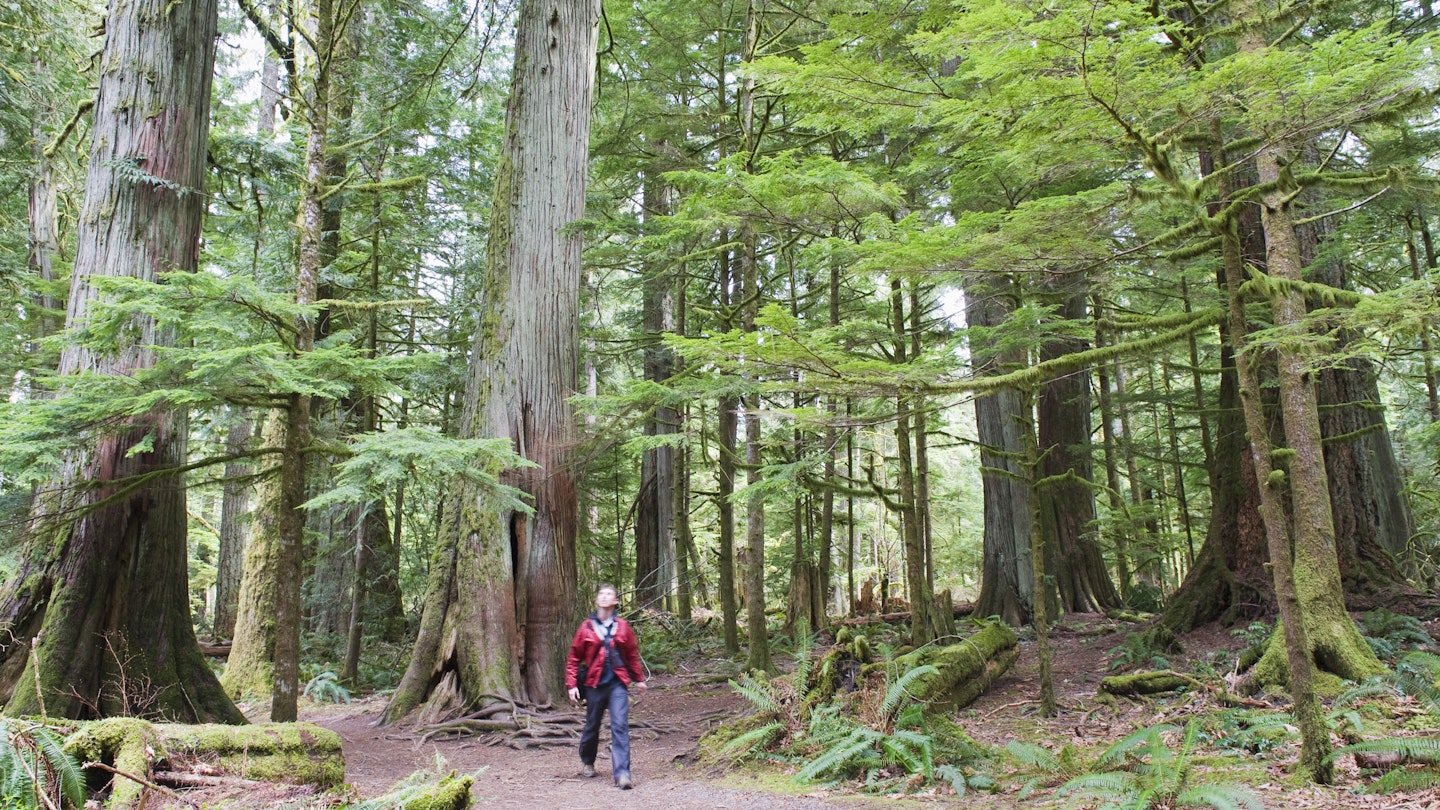Explore the Vancouver Island Trail
Ten years in the making, is Canada’s newest long-distance trail. It spans 770 km, stretching from the regal city of Victoria in the south to the jagged sea-stacks of Cape Scott in the north. Along the way, trail-users can fully immerse themselves in every facet of the island’s ecology and culture, including old-growth forests, velvety mountains, bumpy logging roads, abandoned mining camps, colossal wooden railway trestles, and the territories of 49 First Nations cultures. Inspired partly by the US’s Pacific Crest Trail, famously depicted in the 2014 film Wild, the VIT has been dubbed a ‘pilgrimage into the wilderness’.
Development of the Vancouver Island Trail
Developing the VIT has been a gargantuan undertaking. The project juxtaposes well-established paths along erstwhile railway lines with rugged new sections requiring good navigational skills. The route-threading process began in 2009 with the formation of the Vancouver Island Trail Association (VITA). This community-run non-profit group, led by experienced Canadian climber and hiker Gil Parker, organizes volunteer trail-building expeditions and liaises with private landowners and First Nations groups to resolve land access issues. While the original aim of inaugurating the trail for Canada’s 150th anniversary in 2017 proved overly ambitious, significant progress was made when Isobel Glover, a 20-year-old University of Victoria student, became the first hiker to complete the trail in its entirety a year later. In July 2019, the VIT’s southern terminus was officially opened with a ceremony in Victoria’s Anderson Hill Park.

Trail Completion Status
Although there are still a few gaps in the route, the trail, as of 2020, is over 85% complete. A series of seven topographic maps and more than 20 route descriptions are available online to aid navigation.
Trail Highlights
The easier southern section of the route from Victoria to Lake Cowichan runs mostly along an old railway grade, incorporating , which was restored after a community fundraising drive in 2011. This portion is accessible by bicycle or horseback. Another remarkable access point is the forestry town of Port Alberni, where hikers can venture north into the Beaufort Mountains or south alongside the narrow Alberni Inlet. The trail branches into Strathcona Provincial Park from the old mining community of Cumberland in the Comox Valley, home to Vancouver Island’s highest peaks and a winter ski area. The most northerly sections of the trail are more rugged and remote, hugging the coast between the Alaskan-like outposts of Port McNeill and Port Hardy before merging with the established North Coast Trail for the last 43 km to Cape Scott. The Cape’s stormy beaches and wild Pacific waves create a dramatic finale.

Planning Your Journey
‘Thru-hikers’ will need approximately two months to cover the full distance; however, the VIT has been carefully designed to cater to both day-trippers and wilderness enthusiasts. With its many access points and points of interest such as Lake Cowichan, Port Alberni, and Woss, most sections of the trail are now mapped, signposted, and ready for hiking. British Columbians can already enjoy the trail, and international travelers planning a Canadian vacation in 2021 or 2022 should contemplate adding it to their itinerary. For updates and further details, check the VIT website here.




